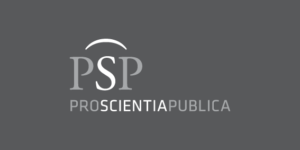LEARNING MODEL FOR IMPROVING THE EFFECTIVENESS OF STUDENTS’ LEARNING PERFORMANCE IN LESSONS
DOI:
https://doi.org/10.15503/jecs2020.1.225.238Keywords:
“parallel” learning model, content units, duration of the teaching and learning process.Abstract
Purpose. The objective of this study is to suggest and demonstrate the feasibility of a new learning model and compare learning outcomes due to the traditional and developed learning models.
Methods. The advantages of the developed model are proved in accordance with statistical processing of the pedagogical experiment results using Statistica. The experiment involves 786 students who are aged 13-14 and study in grades 7-8. The time parameters of the duration of individual elements of the lesson in the traditional learning model are consistent with the methodological literature (Horonovska & Samsonova, 1985; Sadovyi, Vovkotrub, & Tryfonova, 2013).
Results. The methodology of selecting generic content units (GCUs) from the subject content and their division into theoretical (TCUs) and experimental (ECUs) content units is elaborated. The total time of all TCUs gives the duration of the teaching process while the time of all ECUs is the duration of the knowledge process acquisition, and the time of GCUs is the duration of the learning process. The result of the GCUs presentation offers two learning models: traditional (sequential) and developed (parallel) ones.
Conclusions. The broad implication of the present research is that the developed "parallel" model allows using the time effectively for practical students’ research work at physics lessons, and enables to give better learning outcomes, use individual and group forms of learning with observance of individualization and differentiation learning principle. This model assists in building pedagogical teaching technologies for different subjects.
Downloads
References
bmbwf.gv.at. (2007). Initiative „25+“:Individualisierung des Unterrichts
Persönlichkeit und Lernvoraussetzungen der einzelnen Schülerinnen und Schüler in den Mittelpunkt stellen. [Initiative „25+“:Individualisation of teaching: focus on the personality and learning requirements of the individual pupils].Retrieved from: https://www.bmbwf.gv.at/Themen/schule/schulrecht/rs/1997-2017/2007_09.html
Bray, B., McClaskey, K. (n.d.). Personalization vs Differentiation vs Individualization Report (PDI) v3. Retrieved from: https://www.slideshare.net/bbray/personalization-vs-differentiation-vs-individualization.
dreambox.com. (2020). Individualized Learning. Retrieved from: https://www.dreambox.com/individualized-learning.
Honcharuk, P., A. (1985). Психология обучения [Psychology of teaching]. Kyiv: Вища школа.
Horonovska, V., T., & Samsonova, H., V. (1985). Уроки фiзики в 6 класi [Physics lessons in the 6th grade]. Kyiv: Рад.школа.
Karpeta-Peć, B. (2017). Indywidualizacja nauczania i uczenia się - otwarte formy pracy w gimnazjum oraz w kształceniu akademickim (action research) [Individualization of teaching and learning processes - open forms of work in the gymnasiums and academic setting]. The Central European Journal of Social Sciences and Humanities (CEJSH), 49(1), 95 – 114.
Karpińska, A. (2016). Indywidualizacja jako zasada i wartość w procesie kształcenia [Individualization as a principle and value in the learning process] (pp. 428-434). [In:] K. Chałas, & A. Maj (Eds.). Encyklopedia aksjologii pedagogicznej [Encyclopedia of Pedagogical Аxiology]. Radom: Polskie Wydawnictwo Encyklopedyczne.
Klus-Stańska, D. (2000). Konstruowanie wiedzy w szkole [Constructing knowledge in school]. Olsztyn: Wydawnictwo UWM.
Poveshchenko, H. P. (2014) Фрагменти суспільної самоорганізації [Fragments of social self-organization]. Kyiv: Спринт – Сервіс.
Rotenberg, V., O., & Bondarenko, S., М. (1989). Мозг, обучение, здоровье [Brain, Training, Health]. Moscow: Просвещение.
Sadovyi, М., І., Vovkotrub, V., P., & Tryfonova, О., М. (2013). Вибрані питання загальної методики навчання фізики: навчальний посібник [Selected issues of methodology of physics teaching]. Kirovohrad: Авангард.
Schmidt, S., J. (2010a). Rzeczywistość obserwatora. [The reality of the observer] (pp. 243 – 261). [In:] B. Balicki, D. Lewiński, B. Ryż, & E. Szczerbuk (Eds.). Radykalny konstruktywizm. Antologia. [Radical constructivism. Anthology] Wrocław: GAJT.
Schmidt, S., J. (2010b). Konstruktywizm w badaniach mediów: koncepcje, krytyka, konsekwencje [Constructivism in media studies: Concepts, criticism, implications] (pp. 243 – 261). [In:] B. Balicki, D. Lewiński, B. Ryż, & E. Szczerbuk (Eds.). Radykalny konstruktywizm. Antologia. [Radical constructivism. Anthology]. Wrocław: GAJT.
Shvay, R., І. (1999). Листок контролю виконання завдань - форма оцiнювання знань та дiагностика процесу iндивiдуального навчання (шкiльний досвiд) [Answer assessment sheet – the form of tasks grading and diagnostics of individual learning process (school experience)]. Materials of Ukrainian Scientific and Methodical Conference ‘Relevant problems of physics teaching and learning in higher education establishments’, 1. 169 – 170.
Shvay, R., I., Hirnyy, О., I. (1999). Фiзика 7. Робочий зошит [Physics 7. Woorkbook]. Lviv: ВНТЛ.
Shvay, R., I., Hirnyy, О., I (2000). Фізика 8. Робочий зошит [Physics 8. Woorkbook]. Lviv: ВНТЛ.
Shvay, R., I. (2002). Фізика в дослідах. Зошит для лабораторних та практичних робіт. 7 клас [Physics in experiments. Workbook for laboratory works and practical tasks]. Ternopil: Навчальна книга – Богдан.
Shvay, R., I., Hirnyy, О., I. (2003a). Фiзика. Навчальний комплекс “Три в одному”. 7 клас: Робочий зошит [Physics. Learning complex “Three in one”. 7th grade]. Kharkiv: ВКФ “Гриф”.
Shvay, R., I., Hirnyy, О., I. (2003b). Фізика. Навчальний комплекс “Три в одному”. 8 клас: Робочий зошит. [Physics. Learning complex “Three in one”. 8th grade]. Kharkiv: Харків: ВКФ “Гриф”.
Sukhodolskyi, H. V. (1972) Основи математичної статистики для психологів. [Basics of mathematical statistics for psychologists]. Lviv: ЛДУ.
Szwaj, R. (2016). Implementacja metod psychologii kreatywności do dydaktyki fizyki. [Implementation of psychology methods into physics didactics] (pp. 70 – 87). [In:] H. Rarot (Ed.), Humanistics and Science. Lublin: Politechnika Lubelska.
Downloads
Published
Issue
Section
License
CC-BY
Authors retain copyright and grant the journal right of first publication with the work simultaneously licensed under a Creative Commons Attribution License that allows others to share the work with an acknowledgement of the work's authorship and initial publication in this journal. All authors agree for publishing their email adresses, affiliations and short bio statements with their articles during the submission process.



